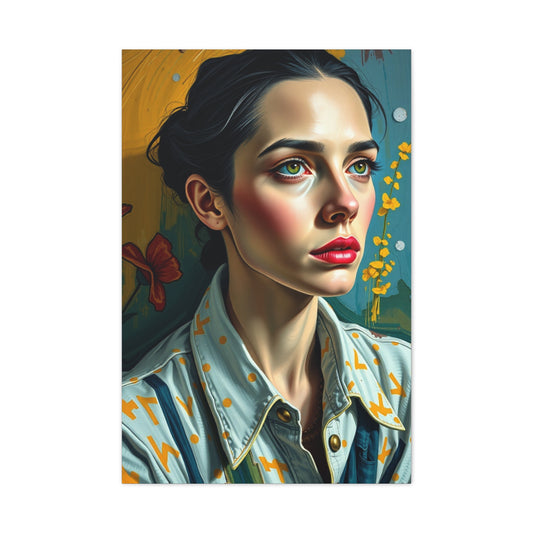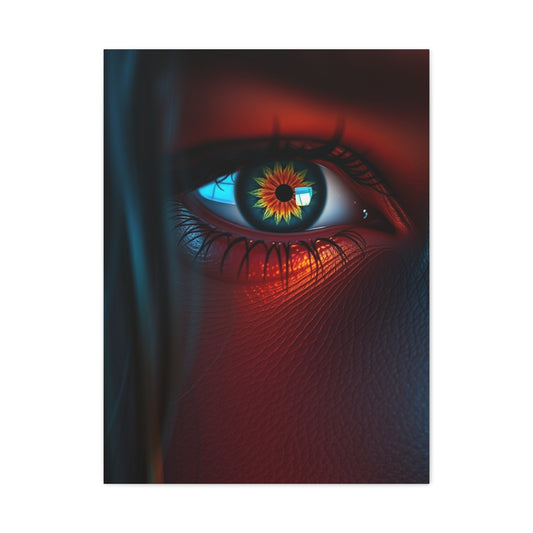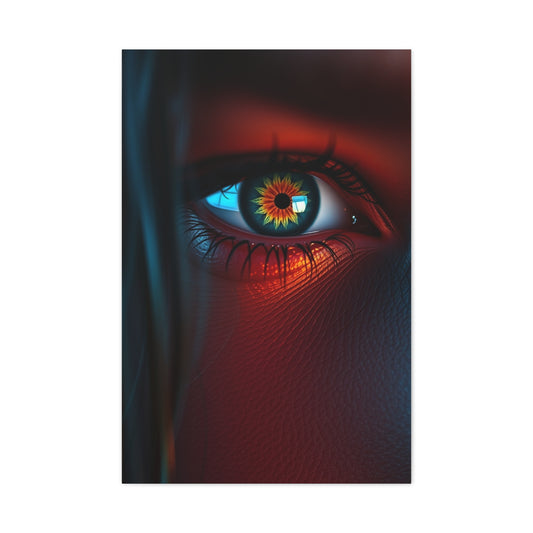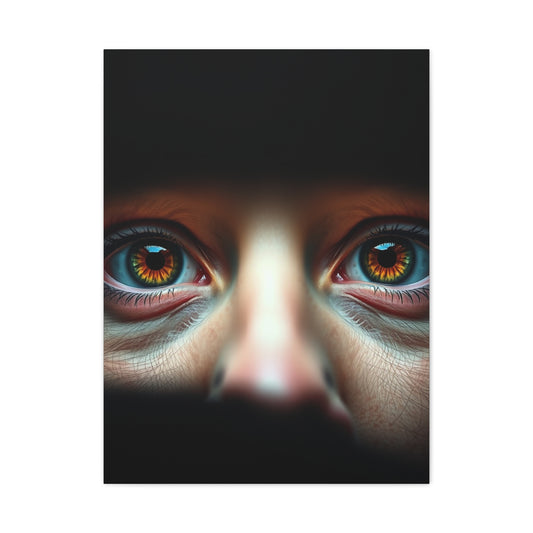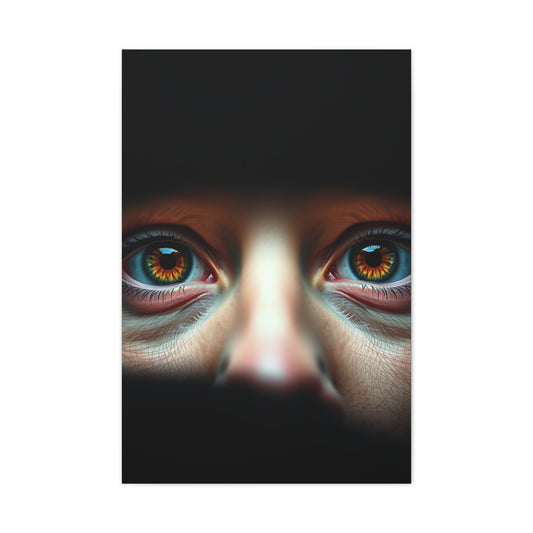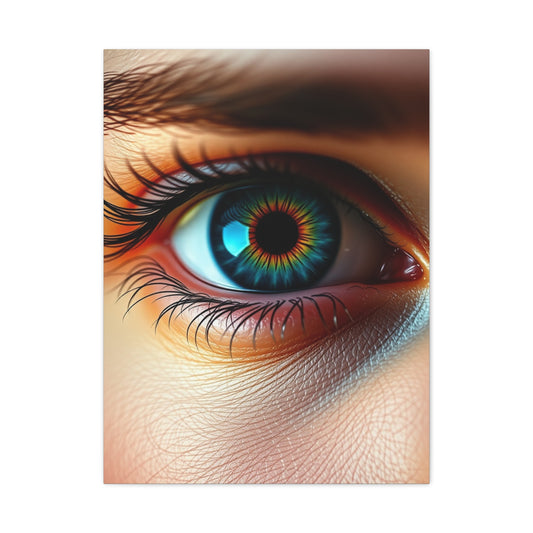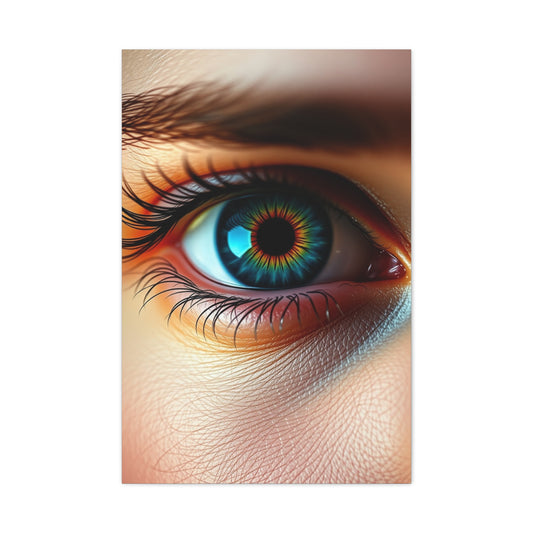Still life photography is a nuanced and emotionally rich art form that allows the photographer to transform ordinary objects into visual poetry. Unlike genres that rely on human subjects or spontaneous movement, still life demands composition, lighting, and narrative thinking. In 2025, the genre continues to evolve as artists explore new interpretations through commercial, fine art, and experimental approaches. These twelve still life photographers stand out for their originality, technique, and storytelling ability. Studying their portfolios can open new avenues for creativity and elevate your understanding of visual language.
1. Jonathan Knowles – Master of Liquids and Kinetic Energy
Jonathan Knowles is one of the most innovative and respected voices in contemporary still life photography. Known internationally for his captivating high-speed liquid photography and dynamic compositions, Knowles has cultivated a career that blurs the line between technical expertise and creative storytelling. His still life images don't simply depict inanimate objects—they burst with life, movement, and visual energy, offering a compelling look at the artistry possible within commercial photography.
From advertising campaigns for world-renowned brands to personal experimental projects, Knowles consistently redefines how motion and stillness coexist within a single frame. What sets him apart is not only his mastery over light and form but also his profound understanding of timing, physics, and visual narrative. In a genre that can easily lean toward static representation, Knowles infuses his photographs with momentum, making them feel almost cinematic despite being still images.
His journey into photography began with a childhood fascination for the science of images. Inspired by Harold Edgerton’s iconic milk splash photograph, Knowles was drawn to the challenge of freezing fleeting moments in time. That early curiosity evolved into a lifelong exploration of the ways liquid behaves in mid-air—capturing everything from a single droplet to an entire wave of color and texture suspended in perfect symmetry. His dedication to this niche within still life photography has earned him international acclaim and numerous industry awards.
One of the hallmarks of Knowles’ work is his ability to turn everyday commercial products into stunning visual spectacles. Through high-speed photography, complex lighting setups, and meticulous timing, he captures split-second explosions of liquid that seem choreographed. Whether it’s a soda fizzing in midair, a martini splash caught at the exact moment of impact, or a cascade of coffee interacting with vapor and steam, his images feel engineered yet spontaneous—scientific yet emotional.
Brands such as Coca-Cola, Guinness, Nescafé, Smirnoff, and many others have tapped into Knowles’ distinct vision to create advertising campaigns that are both visually arresting and emotionally engaging. His visuals do more than promote a product—they create an atmosphere, a narrative, a mood. This rare combination of commercial appeal and artistic integrity is what makes his work stand out in the competitive field of still life and advertising photography.
His creative process involves a fusion of precision engineering, detailed previsualization, and an intuitive feel for aesthetics. While many still life photographers focus primarily on composition and lighting, Knowles extends his practice into the realms of chemistry and motion dynamics. He often constructs elaborate rigs and uses high-speed cameras to capture the millisecond interactions between liquid, glass, and light. These meticulous setups require not only artistic vision but also a deep understanding of how various elements react in motion.
Despite the complexity of his setups, Knowles' final images maintain a sense of clarity and simplicity. He has an innate talent for distilling chaos into elegance, freezing movement into structured form, and highlighting the inherent beauty of fluidity. This ability to impose order on something as unpredictable as liquid is a testament to his technical mastery and creative control.
Knowles’ body of work also includes a significant number of conceptual still life pieces that go beyond product-focused imagery. These often delve into abstract themes or play with light and texture in unexpected ways. His personal projects demonstrate a curiosity that remains unbounded by commercial limitations, allowing him to experiment with surreal juxtapositions, unexpected color palettes, and unconventional perspectives.
In recent years, he has incorporated more multidisciplinary collaborations into his practice, working alongside stylists, digital artists, and motion designers to expand the scope of his still life productions. Some of his series blend photography with digital manipulation, where frozen liquids are digitally replicated or extended into fluid animations, blurring the boundary between still photography and moving image. This hybrid approach keeps his work at the forefront of visual innovation in a constantly evolving media landscape.
|
Related Catagories: |
Another distinguishing aspect of Knowles’ work is how he captures texture and density through light. In many of his liquid photographs, light isn’t just illuminating the subject—it’s refracted through droplets, reflected in curves, and diffused through mist. This interplay between illumination and material forms layers of visual interest that reward prolonged viewing. The richness of detail, from the subtle refraction inside a water droplet to the glistening sheen on a splash of syrup, brings a visceral realism to his work that is often lacking in more sterile or digitally rendered compositions.
Knowles is also known for mentoring emerging talent and frequently shares behind-the-scenes glimpses of his creative process through talks, exhibitions, and online content. His openness about the challenges and experimentation involved in capturing high-speed still life photographs provides valuable insight for aspiring photographers who wish to expand beyond conventional techniques.
From an SEO perspective, his name is consistently associated with terms like liquid photography, commercial still life, beverage advertising photography, and high-speed product photography. His dominance in these specific niches of the still life genre makes him not just a pioneer but also a major reference point for clients and photographers alike seeking excellence in liquid and motion-based photography.
One cannot overlook the emotional tone in his work either. While high-speed photography is often admired for its technical brilliance, Knowles introduces a sense of story and feeling. Each droplet, splash, or mist conveys more than its physical form—it evokes sensation, whether it’s the cool refreshment of soda, the warmth of espresso, or the sharp zest of citrus oil suspended in air. In his hands, liquid becomes not just a subject but a storyteller, animated through time and held still for us to witness.
In addition to editorial and commercial success, Jonathan Knowles has participated in numerous exhibitions and visual campaigns that have brought fine art sensibilities into the advertising realm. His ability to bridge these two worlds is rare and places him in the elite category of photographers who not only shape trends but define them. For anyone serious about learning the depth and diversity possible in still life photography, his portfolio offers an endless source of inspiration and technical marvel.
As visual media continues to evolve in the digital age, Knowles remains at the cutting edge by embracing innovation without sacrificing artistic authenticity. Whether shooting for a global brand or creating a personal piece in his studio, his work is characterized by intention, experimentation, and a relentless pursuit of beauty in motion. In the field of still life photography—especially where motion, texture, and light intersect—Jonathan Knowles remains a singular and influential figure whose work is as technically masterful as it is creatively profound.
2. Jenny Van Sommers – Infusing Whimsy into Everyday Objects
Jenny Van Sommers has built a compelling reputation in the world of contemporary still life photography by embracing the playful, the surreal, and the unexpected. Originally from Sydney and now based in London, she stands out as a visual artist who approaches still life with the mind of a conceptual designer and the heart of a storyteller. Her photographs are instantly recognizable for their imaginative use of color, shape, and composition. Rather than confining herself to the classic rules of still life, Van Sommers breaks them deliberately, reassembling everyday objects into curious and clever visual arrangements that provoke both amusement and reflection.
Her work bridges the space between fine art and commercial photography, showing that it is possible to maintain strong conceptual integrity while working with global brands. Her portfolio includes campaigns and editorial commissions for influential clients such as Apple, Nike, Hermès, and Audi. These collaborations highlight her ability to bring a distinctive artistic sensibility to high-profile commercial work. In each frame, there’s a subtle yet potent narrative lurking beneath the surface. Whether she’s arranging macarons into playful faces or placing tech gadgets in gravity-defying configurations, her compositions blend wit with an impeccable sense of balance and precision.
One of the defining characteristics of her photography is its embrace of minimalism without sacrificing complexity. Her images are often sparse in setting but rich in imagination. A single prop can carry the entire composition when it's styled and lit with her signature care. She transforms banal objects into sculptural statements, manipulating perspective, color, and texture to create something truly original. Her preference for studio-based photography enables her to control every element in the frame, which is essential to the clean yet whimsical aesthetic she consistently delivers.
Jenny Van Sommers also excels at creating visual metaphors through abstraction. She deconstructs the world around her and rebuilds it through a surreal lens, challenging the viewer to see the familiar in unfamiliar ways. In her compositions, a peeled banana might become a metaphor for vulnerability, or a spilled bottle of nail polish might mirror emotional excess. There’s always more to her still life images than initially meets the eye, and this layered approach gives her work a lasting presence in both editorial layouts and gallery spaces.
During the pandemic lockdown in 2020, Van Sommers turned her attention to painting, an exploration that added another layer to her already rich artistic vocabulary. She began experimenting with hand-painted bananas—an absurd and humorous project that gained significant attention. These paintings were not only a departure from photography but a continuation of her interest in recontextualizing the mundane. The project became a cathartic expression of creativity during a period when many artists felt stagnant or disconnected from their practice. Through this shift, she showed how adaptable and multidimensional her artistry really is.
Despite the apparent spontaneity in her work, there is an underlying meticulousness to her process. She often sketches ideas beforehand, allowing each concept to evolve visually before reaching the camera. The lighting is precise, the staging is deliberate, and the editing is refined, resulting in a highly controlled yet seemingly effortless output. This is a hallmark of her success in still life photography—being able to inject spontaneity into images that are, in fact, highly orchestrated.
Van Sommers' photography also resonates with modern audiences because it speaks to contemporary aesthetics—bold palettes, ironic humor, and visual clarity. Her images often feel like they belong on the pages of avant-garde design magazines or modern art journals. Yet, they also maintain wide appeal due to their accessibility and relatability. She captures fleeting moments of absurdity in everyday life, making viewers pause, smile, and think. This universality is part of what has made her work resonate across cultures and industries.
Her expertise lies not only in photographing static objects but also in animating them through composition. A tube of lipstick, a half-eaten éclair, or a floating sneaker are never just products in her images—they become actors in a larger scene, carefully posed to play their part. She elevates product photography into an art form, inspiring a generation of photographers to blur the line between advertising and artistic expression.
In addition to her commercial projects, Van Sommers has produced personal series that further showcase her range. These works often delve deeper into abstract expressionism and explore themes such as isolation, repetition, and transformation. Her photographs do not rely on grand scenery or elaborate props—instead, she extracts magic from simplicity. A single shadow, a peculiar object placement, or a surprising color contrast becomes a focal point of artistic inquiry.
One of the strengths of Van Sommers’ visual storytelling is her ability to create emotional resonance without human subjects. This can be a particularly challenging aspect of still life photography—infusing inanimate objects with feeling. Through careful styling, spatial tension, and unexpected arrangements, she breathes character and narrative into each item. The result is imagery that’s not only aesthetically engaging but emotionally intelligent.
As a commercial still life photographer, Jenny Van Sommers has managed to cultivate a distinct style that clients recognize and seek out. At the same time, she refuses to be boxed into repetitive or formulaic visual approaches. Her continued evolution as an artist, through mediums like painting or digital experimentation, reflects a creative spirit that remains restless and inspired.
She is also known for sharing aspects of her process, offering insights into how her concepts are formed and executed. This openness has made her an influential figure for aspiring still life photographers who are trying to carve out a niche in a saturated visual market. Her emphasis on idea-driven imagery reminds photographers that successful still life work is not just about beautiful lighting or clean backgrounds—it's about vision, originality, and meaning.
From a technical standpoint, her use of color blocking, asymmetrical balance, and spatial tension contributes to the visual signature that defines her portfolio. Her editing style is subtle, letting the composition and subject matter shine. Post-production typically enhances texture and saturation without overshadowing the core idea, ensuring her images remain crisp and impactful across both digital and print platforms.
As the landscape of commercial photography continues to evolve with new tools and trends, Jenny Van Sommers remains ahead of the curve. Her work is a testament to the power of creative risk, conceptual clarity, and artistic play. In a world increasingly inundated with visual content, her photographs cut through the noise with originality and substance.
In the realm of still life photography—especially where humor, abstraction, and minimalist storytelling intersect—Jenny Van Sommers has established herself as a true innovator. Her ability to turn everyday objects into imaginative narratives, paired with her consistent delivery of high-concept visual pieces, ensures her continued relevance and impact in the world of modern photography.
3. Mat Collishaw – Provocative Narratives Through Stillness
Mat Collishaw is not a traditional still life photographer. His body of work exists at the cutting edge of conceptual art, where photography intersects with history, technology, illusion, and confrontation. A founding figure in the Young British Artists (YBA) movement, Collishaw’s approach to still life imagery is cerebral, layered, and often unsettling. He manipulates the genre not just to evoke beauty, but to elicit tension, challenge cultural norms, and explore philosophical themes such as mortality, moral ambiguity, and societal decay.
The Artist’s Origins and Philosophy
Born in Nottingham in 1966, Collishaw attended Goldsmiths’ College, a crucible for many of the UK's most influential conceptual artists. Early in his career, he gained attention for his controversial piece Bullet Hole—a large-scale reproduction of a gunshot wound presented as photographic art. This work, although not still life in the traditional sense, set the tone for what would become his signature style: confronting the viewer with visually seductive images that simultaneously provoke discomfort.
His aesthetic lies in contradiction. Collishaw fuses the beautiful with the grotesque, the sacred with the profane, and the intimate with the macabre. These dualities emerge throughout his still life works, which often draw inspiration from classical vanitas paintings, religious iconography, and historical motifs. But unlike classical still lifes, which typically present an arrangement of fruit or flowers as symbolic tokens of transience, Collishaw uses photography to upend expectations and subvert tradition.
Still Life Reimagined Through Conceptual Art
Collishaw’s still life photography is rarely confined to a single medium. Many of his works are installation-based, blending sculpture, digital imagery, moving elements, and projected visuals. These hybrid creations often feature static arrangements—dead animals, decaying flora, symbolic relics—but presented in a way that disorients and mesmerizes. He uses modern tools like motion sensors, mirrors, and video loops to breathe ephemeral life into otherwise lifeless compositions.
This redefinition of still life transforms it into something immersive, even theatrical. In exhibitions, his works feel less like framed photographs and more like living environments—conscious, haunting spaces that whisper rather than shout. The viewer becomes part of the tableau, forced to confront the deeper messages within the assemblage.
One of his well-known works, The Centrifugal Soul, takes influence from Victorian zoetropes and naturalist imagery. In this piece, rotating floral and bird-like structures are animated through light and mirrors, creating the illusion of movement within meticulously sculpted still forms. The result is a meditation on evolution, beauty, and the performative nature of human behavior. Though based on a still life framework, this work engages the viewer in a deeply temporal and immersive way.
Themes of Mortality and Illusion
Much of Collishaw’s visual language harks back to the themes prevalent in 17th-century vanitas paintings. These historical still lifes were often filled with skulls, wilting flowers, hourglasses, and extinguished candles—symbols meant to remind viewers of the fleeting nature of life and the inevitability of death. Collishaw adopts these motifs, but reframes them using modern materials and contemporary anxieties.
For instance, in some of his photographic still lifes, taxidermy animals are paired with LED lighting or placed behind scratched glass, evoking a sense of museum detachment while also questioning our modern relationship with nature, life, and preservation. These juxtapositions speak to our obsession with aesthetics, our tendency to commodify life, and the voyeuristic pleasure we derive from viewing destruction at a distance.
|
Related Catagories: |
Another recurring element in his work is the use of repetition and digital manipulation to distort realism. Flowers might appear too perfect, insects might shimmer in unnatural ways, and surfaces might show digital glitches. These manipulations draw attention to the constructed nature of imagery and invite deeper questioning of truth, perception, and belief. By doing so, Collishaw underscores the illusion inherent in photography itself—a medium often mistaken for pure documentation.
Exhibition Legacy and International Recognition
Mat Collishaw's work has been exhibited in some of the most respected art institutions around the world, including the Centre Georges Pompidou in Paris, the Tate in London, and the Museum of Contemporary Art in Rome. His installations and photographic works have also appeared in biennials and solo exhibitions across Europe, the Americas, and Asia.
These prestigious showings reflect not just the aesthetic power of his art, but its ability to resonate across diverse cultural contexts. Regardless of location, viewers are drawn into his hypnotic images, which evoke universal themes—death, beauty, loss, temptation, and decay—through a distinctively modern lens.
His presence in both traditional galleries and technologically advanced installation spaces is a testament to his adaptability and creative foresight. He has embraced digital tools, virtual environments, and kinetic sculptures without abandoning the timeless foundation of composition and symbolism that defines still life.
Collishaw’s Role in Modern Still Life Photography
In the context of 21st-century still life photography, Collishaw occupies a unique space. He does not document objects for the sake of their form or aesthetic value. Instead, he manipulates them, stages them, often reanimates them—all in service of a broader narrative. His work exemplifies the power of photography to transcend static form and engage philosophical discourse.
Through his integration of light, decay, motion, and metaphor, Collishaw challenges traditional notions of beauty and permanence. He reminds viewers that still life photography, far from being a passive medium, can be radical and deeply political. It can ask questions, unsettle, and provoke change.
His exploration of illusion—both visual and conceptual—ties his work to the very roots of photography, which has always been both mirror and mask. By pulling viewers into deceptive, often disturbing compositions, he confronts the ethics of looking, the beauty in imperfection, and the ever-blurring line between life and its representation.
4. Henry Hargreaves – Humor, Food, and Cultural Commentary
Henry Hargreaves is a provocative voice in the contemporary still life photography scene. Based in Brooklyn, New York, he has become known for turning food—an often benign, comforting subject—into a tool for social observation, cultural critique, and ironic reflection. His vibrant, colorful images invite laughter, reflection, and often discomfort, challenging viewers to think beyond aesthetics and consider what the arrangement of a plate—or the absence of one—can say about society, politics, and human behavior.
What sets Hargreaves apart from many still life artists is his ability to fuse humor and critique so seamlessly. His compositions are visually inviting, often playful or absurd on the surface, but upon closer inspection, they carry weighty undertones. His projects often stem from contemporary issues, whether they’re rooted in inequality, censorship, overconsumption, or mortality. Still life in his hands becomes not just a visual discipline, but a vehicle for socio-political dialogue.
Before becoming a professional photographer, Hargreaves lived a multifaceted life. He worked as a fashion model for international labels like Prada and Lacoste and later bartended in some of Manhattan’s busiest nightlife venues. These experiences—steeped in image-making, consumer culture, and hospitality—would later inform his artistic style, giving him an insider’s perspective on society’s complex relationship with status, desire, and indulgence.
His entrée into photography was unconventional and entirely self-driven. Without formal training, he learned by doing—experimenting with lighting, styling, and post-processing until he developed a language of his own. That language is now recognizable across editorial spreads, exhibitions, and viral digital projects. His images are clean and sharply composed, with an emphasis on symmetry, negative space, and saturated color. Yet it is the underlying concepts, not just the composition, that command attention.
Among his most well-known bodies of work is No Seconds, a still life series that recreates the last meals requested by death row inmates. Each image is carefully styled to match historical records, presented against a sterile background that enhances the emotional contrast between the food’s domestic familiarity and the grim context of its consumption. The series doesn't preach—it simply presents. And in doing so, it makes viewers question their comfort with state-sanctioned death, justice, and empathy.
Another project, Banned, visualizes foods that are forbidden in various parts of the world. From Kinder Eggs in the United States to shark fin soup in other countries, this series exposes the often arbitrary and cultural nature of food regulation. Each photograph is an arresting still life—carefully lit and perfectly composed—but behind the beauty lies a potent question about control, legality, and ethics in our global food system.
Hargreaves also explored the theme of overindulgence and nostalgia in his Deep-Fried Gadgets series. Here, he coated old electronics like iPhones, Game Boys, and laptops in batter and deep-fried them to resemble comfort food. The images are humorous and jarring, serving as commentary on modern consumer obsession, digital dependency, and the commodification of technology. By turning technology into something edible—and thereby perishable—he flips the narrative on value and disposability.
His exploration of food is not limited to what people eat but extends to how they eat, where they eat, and what that reveals about human culture. For Hargreaves, food becomes a mirror through which broader patterns of inequality, excess, identity, and ritual are reflected. Unlike more traditional still life photography that glorifies form and texture for its own sake, his work insists on context. There is always a story behind the plate, always a metaphor tucked beneath the garnish.
Technically, his images are characterized by precision and clarity. He employs studio lighting that accentuates texture, reflection, and shadow, resulting in photographs that are as visually polished as they are narratively raw. His backgrounds are often stark, sometimes monochromatic, drawing the eye directly to the subject. He uses space deliberately—sometimes crowding a table with gluttonous heaps of junk food, other times leaving a single item on an empty plate to emphasize austerity or loss.
While his projects vary greatly in tone and subject, they all share an unmistakable visual consistency. His images often look like advertising campaigns at first glance—bright, glossy, and enticing. But unlike commercial photography, which typically aims to sell, Hargreaves uses the visual grammar of advertising to unsettle. He draws people in with the promise of beauty and leaves them with difficult questions about ethics, identity, and consumption.
Hargreaves' work has been widely exhibited in galleries across North America, Europe, and Asia, including high-profile appearances at the Venice Biennale and the MAXXI Museum in Rome. His photography has been published in leading magazines, and his visual campaigns have gone viral on digital platforms, further proving that still life—when used thoughtfully—can be a powerful form of contemporary storytelling.
He often collaborates with stylists, chefs, food historians, and conceptual artists to enhance the authenticity and complexity of his work. These interdisciplinary partnerships bring depth to his still lifes, grounding them in research and cultural nuance. Whether he is recreating ancient dishes or conceptualizing futuristic meals, his attention to detail is rigorous and immersive.
Despite the academic weight behind many of his themes, Hargreaves never loses his sense of play. His approach is informed by curiosity, experimentation, and a willingness to subvert genre expectations. This openness to creative risk keeps his work fresh and culturally relevant, resonating with a broad spectrum of audiences—from art collectors to social critics, food lovers to political activists.
In recent years, he has expanded into multimedia formats, using video, virtual exhibitions, and digital installations to bring his food-based storytelling into new dimensions. Yet, at the core of it all remains the still image—the power of a single, carefully composed photograph to stir emotion, provoke dialogue, and leave a lasting impression.
In the wider world of still life photography, Henry Hargreaves is a singular force. He has redefined how still life can function, transforming it from a decorative tradition into a platform for critical engagement. His images are not content with being beautiful—they insist on being relevant. They challenge our comfort zones, deconstruct our habits, and illuminate the cultural forces that shape our everyday lives.
Through humor, irony, and impeccable visual craftsmanship, Hargreaves proves that still life photography can be more than a celebration of the material—it can be an exploration of the immaterial, the ideological, and the invisible systems that shape who we are and how we eat.
5. Evelyn Bencicova – Symbolism in Subdued Hues
Evelyn Bencicova, a Slovak artist educated in Vienna, creates surreal and symbolic still life images. Her photographs are often visually minimal yet emotionally intense, combining sculptural objects with human figures or architectural backdrops. She employs a soft, desaturated palette that adds to the dreamlike, introspective quality of her work. Clients like Gucci and Cartier have recognized her unique vision. Her imagery often feels like a puzzle—inviting viewers to interpret deeper meanings beneath the surface of beautifully restrained compositions.
6. Paulette Tavormina – A Contemporary Take on Baroque Still Life
Paulette Tavormina crafts still lifes that echo the grandeur of 17th-century Dutch painting. Her setups are rich with texture, symbolism, and drama. From wilted flowers to ripe fruit and antique vessels, her images pay homage to the past while feeling relevant in a modern context. Based between New York and Connecticut, Tavormina's background in film prop styling informs her meticulous attention to detail. Her compositions resonate with historical reference yet carry a contemporary flair that bridges time and tradition.
7. Tatyana Skorokhod – Organic Harmony in a Painter’s Light
Tatyana Skorokhod, an amateur photographer from Kyiv, Ukraine, evokes timeless beauty with her still life photography. Her subjects often include fresh produce, handmade ceramics, and floral arrangements. With gentle lighting and painterly backdrops, she creates visual serenity reminiscent of classical still life paintings. Her style is poetic, intimate, and rich in atmosphere. Though not a full-time professional, her work demonstrates how passion, patience, and a keen eye can produce deeply moving visual narratives.
8. Shihya Kowatari – Fragile Beauty in Nature’s Details
Japanese artist Shihya Kowatari creates ethereal still life imagery by focusing on delicate natural forms such as skeleton leaves, petals, and dried botanicals. She often shoots with backlighting and uses shallow depth of field to create soft bokeh effects that add a dreamy quality to her work. Her images are introspective and evoke a sense of quiet wonder. By elevating the unnoticed elements of nature, she invites viewers to pause and reflect on the intricacy and impermanence of the organic world.
9. Robert Sulkin – Conceptual Still Life with Social Undertones
Robert Sulkin, based in the United States, approaches still life from a highly intellectual perspective. His images often contain juxtapositions of outdated technology, taxidermy, and surreal props to comment on society’s relationship with machines, information, and chaos. With decades of experience as a photography professor, his understanding of composition and concept is profound. His black-and-white work has earned numerous awards and appeared in national exhibitions. Sulkin's art is a visual dialogue on existential and technological anxieties.
10. Krista van der Niet – Ironic Minimalism from the Netherlands
Krista van der Niet explores irony and simplicity through her minimalist still life images. Her setups often use everyday objects like vegetables, textiles, or household items, presented in clean environments that highlight form, balance, and contrast. Her compositions carry satirical undertones and subtly critique consumer behavior and modern aesthetics. Based in the Netherlands, she has worked with academic institutions and cultural organizations across Europe. Her visual language is quiet yet clever, fusing design sensibility with sociocultural awareness.
11. Olivia Parker – Exploring Memory Through Visual Precision
Olivia Parker has been a pioneering force in still life photography for several decades. Originally trained in silver print processes, she transitioned to digital media after a physical injury limited her darkroom access. Her work often explores themes of memory, transformation, and impermanence, using organic materials and symbolic objects arranged with painterly precision. With over 100 solo exhibitions globally, her art reflects both technical mastery and emotional subtlety. Her recent series, inspired by her husband’s Alzheimer’s diagnosis, adds profound personal meaning to her visual storytelling.
12. Jeroen Luijt – Structured Elegance with Classical Influence
Dutch photographer Jeroen Luijt brings an architectural eye to still life. Originally working in IT, he transitioned to photography and developed a style defined by order, balance, and aesthetic restraint. His compositions often include fruits, ceramics, and sculptural shapes, carefully lit and composed to highlight their inherent design. Each piece feels meditative and polished, drawing from traditional still life motifs while embracing modern sensibilities. Exhibiting widely in the Netherlands, his work is both grounded in classical influence and forward-looking in its execution.
Final Thoughts: Elevating the Everyday
Still life photography is more than a simple arrangement of objects—it is a canvas for emotion, symbolism, and visual storytelling. The twelve photographers highlighted here prove that this genre continues to thrive in 2025, evolving through technology, personal expression, and bold experimentation. Their portfolios offer not just aesthetic beauty but also insight into culture, memory, and the human condition. By studying their techniques and artistic philosophies, emerging photographers can find guidance and inspiration to create still life images that are not only visually striking but also deeply meaningful.













